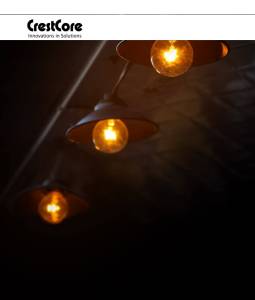Description
Sub Metering: Accurate Energy Monitoring & Cost Allocation
Sub metering provides granular energy consumption data, allowing you to monitor energy usage at a much more detailed level than traditional whole-building metering. Instead of a single meter for the entire facility, sub meters track energy usage for individual circuits, equipment, tenants, or even specific areas within a building. This provides invaluable insights for reducing energy costs, identifying inefficiencies, and improving operational efficiency.
Benefits of Sub Metering:
- Improved Energy Efficiency: Pinpoint energy hogs and areas for improvement. Identify equipment consuming excessive energy and prioritize energy-saving upgrades.
- Reduced Energy Costs: Optimize energy consumption by understanding usage patterns and implementing targeted conservation measures. Targeted efficiency improvements lead to direct cost savings.
- Enhanced Tenant Management (Multi-Tenant Buildings): Fairly allocate energy costs to tenants based on their actual consumption, eliminating disputes and encouraging energy conservation.
- Effective Fault Detection: Quickly identify malfunctions in equipment by monitoring unusual energy consumption patterns. Early detection prevents costly repairs and downtime.
- Compliance & Reporting: Meet regulatory requirements and demonstrate energy conservation efforts to stakeholders. Comprehensive data provides evidence for sustainability initiatives.
- Data-Driven Decision Making: Gain a clear understanding of energy consumption trends, allowing for informed decisions on future energy investments and strategies.
- Predictive Maintenance: Anticipate equipment failure by monitoring changes in energy usage patterns.
Types of Sub Meters:
Sub meters are available for various energy sources including:
- Electricity: Measure electrical energy consumption in kilowatt-hours (kWh). Various options exist, including clamp-on meters for non-invasive installation, and panel-mounted meters for permanent integration.
- Water: Measure water consumption in gallons or cubic meters. Useful for identifying leaks and optimizing water usage in industrial or commercial settings.
- Gas: Measure gas consumption in cubic feet or cubic meters. Similar benefits to water sub metering apply, focusing on detection of leaks and optimized usage.
- Steam: Measure steam consumption, often crucial for industrial processes and large buildings.
Choosing the Right Sub Metering System:
The ideal sub metering system depends on several factors including:
- Building type and size: The scale of the building will impact the number and type of meters required.
- Energy sources used: Select meters compatible with the specific energy sources being monitored.
- Data acquisition and reporting needs: Consider whether on-site displays, remote monitoring via software, or data logging are required.
- Budget: Sub metering systems vary in cost depending on the complexity and features.
Our Sub Metering Solutions:
[ Insert details about your specific sub metering offerings, including features, specifications, and pricing options. Include links to product pages or further information. ]
Contact us today to discuss your sub metering needs and find the perfect solution for your facility.
